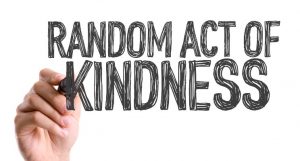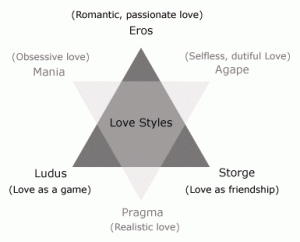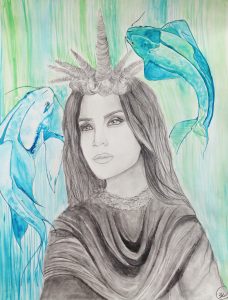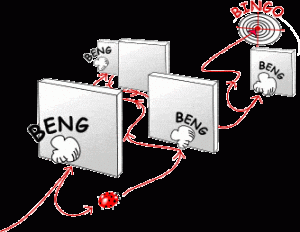Assignment Takeaway #5
The last assignment that Professor Muth’s has assigned in our Social Psychology course was to do five nice things for people that we don’t know. In this assignment I had talked about some of the intended and even accidental good deeds I have done that week. I explained how my good deeds had happened and how people would respond to it. I have recently realized that pure happiness can’t be measured and that the idea of small matters greatly than a person ever knows. Throughout childhood and adolescence, I was raised to be kind and was always encouraged to do good. I was conditioned to be kind because it was “the right thing” to do, and to help those that are in need, but it wasn’t until I implemented these actions that I realized “good deeds” are more than “the right thing to do.” Good deeds are capable of bringing countless amounts of happiness to all sides. This is something personally relevant to me because doing good deeds offers the opportunity to connect with people on a completely different level. Part of my intention for good deeds was just how my family raised me to be. The feeling of passing on kindness, or doing good deeds, is a power feeling that radiates a sense of self-worth, self-esteem, and value.
The photograph below is another of phrase simillar to “good deed.”

Assignment Takeaway #4
Our fourth assignment in Professor Muth’s Social Psychology course was based on Styles of Love. The first part of the assignment was to complete a Style of Love questionnaire that was meant to determine what styles best describes us. After the questionnaire, we were to measure our average style of love with the general male and female average.There were a total of 42 questions asked about my personal preference of love, my early attraction, intensity of emotion, the combination of love and friendship, desired attributes in one another, and etc. The questions were divided in six categories, the first set was based on questions of Eros, the second set was based on Ludus questions, the third and fourth set was based of Storge and Pragma, while the last two was based on Mania and Agape questions. I was able to rate each item on a Likert scale between 1-5, 1 being strongly agree and 5- being strongly disagree. In each of the six categories of questions, I added up the seven questions that I rated. After adding to get my score for Eros, Ludus, Storge, Pragma, Mania, and Agape, I divided my number by the number of questions. For the Eros set of questions I added up 9 and divided it by 7 to get a mean of 1.3. For the Ludus set of questions I added up 28 and divided it by 7 to receive a mean of 3.1. For the Storge questions I added up 16 and divided it by 7 and got a mean of 1.8. For the Pragma set of questions I received a mean of 1.6, for Mania I received a mean of 1.9, and lastly I received a mean of .9 for Agape set of questions. I first became familiar with the Styles of Love in my Psychology of Sex course that I took 2 semesters ago. Since the first time I tested my style of love to now, my results haven’t changed much. What I have learned from this assignment is how my style of love is determine by my emotions, cognitive, and social behavior. Overall the assignment was enjoyable and informative
The photograh below is a triangular diagram of 6 styles of love that can best describe a person.

Assignment Takeaway #2
Our second assignment in Professor Muth’s Social Psychology course was based off of Self Efficacy. In this assignment I started to observe some photographs of myself. I ended up choosing 6 photograph that I thought best describe me in good times and in bad. I described in my written assignment what each picture was, where I was and who I was with. With these photographs, I reflected on how the the photographs assured my self concept, perceived self-control, and self-presentation. This assignment reminds me of an assignment I had in an AP Art class I took in high school. I had to choose photographs that best described me and was assigned to either paint or draw a self portrait of how I perceived myself. Although I have had this assignment more than once, it is relevant to me now as it was then. “Self Concept” changes during time. I still think highly of myself as I did before, the only thing that has changed is time and all that I have done between then.

The photograph above is the mixed media Self Portrait I created in my AP art class.
Assignment Takeaway #1
Our first assignment in Professor Muth’s Social Psychology course was about the four different types of heuristics which are determined in Chapter 2 of our textbook, Social Psychology. In this assignment I described representativeness heuristic, availability heuristic, anchoring & adjustment heuristic, and the status quo heuristic. I was able to provide made up scenario’s that helped describe the differences between each heuristic. In each scenario, I described how the different heuristic can lead to poor decision making or incorrect inferences. This assignment was relevant to me because I was learning new material. I’ve always known what a heuristic was but I was never aware of the different kinds. This assignment taught me that what may be natural for individuals, can actually be misguided and lead to poor judgment and prejudice.This is a good visual representation of the heuristic method of learning. Sometimes we have to bounce into each thought to find the right one.
The image below is a great visual representation of the heuristic method of learning. Sometimes we have to bounce on each thought to land on the right one.
